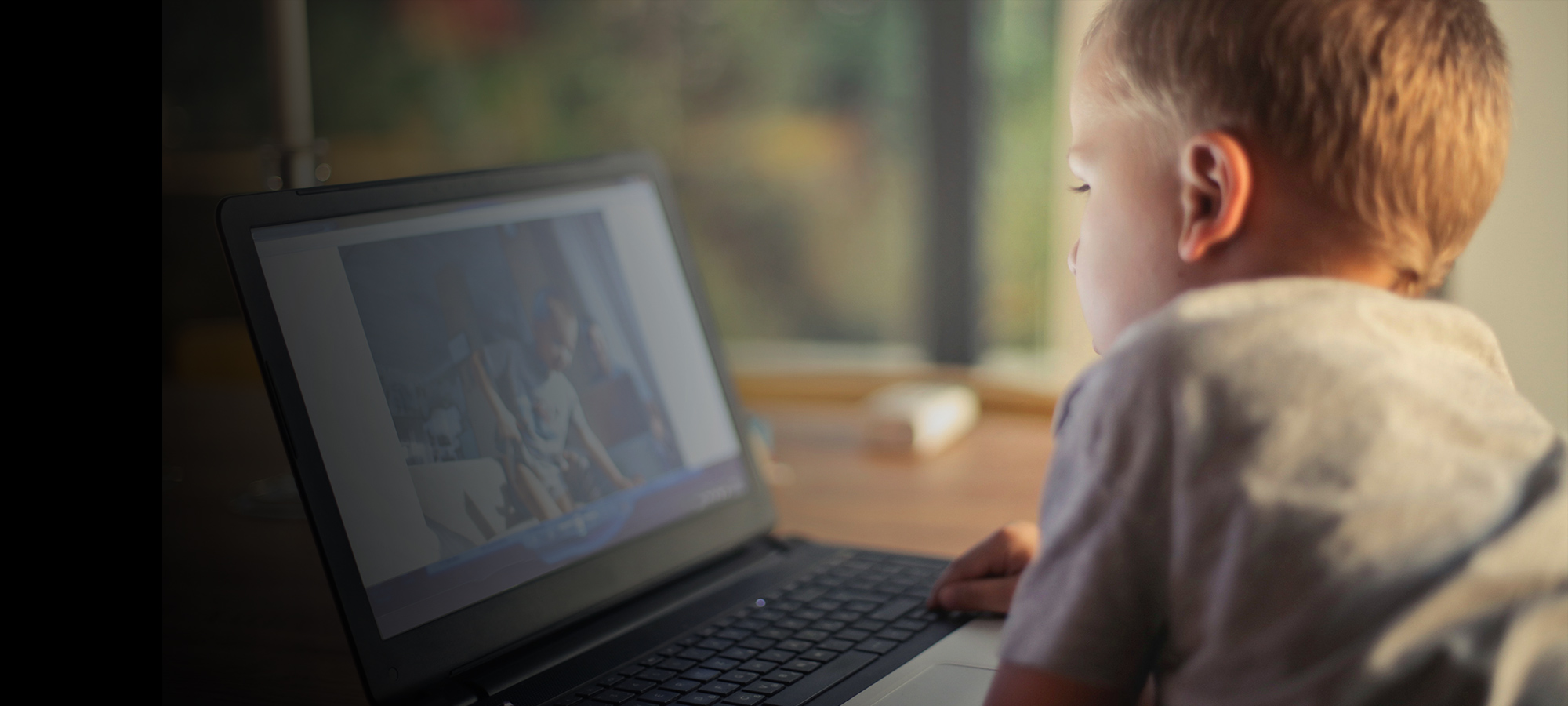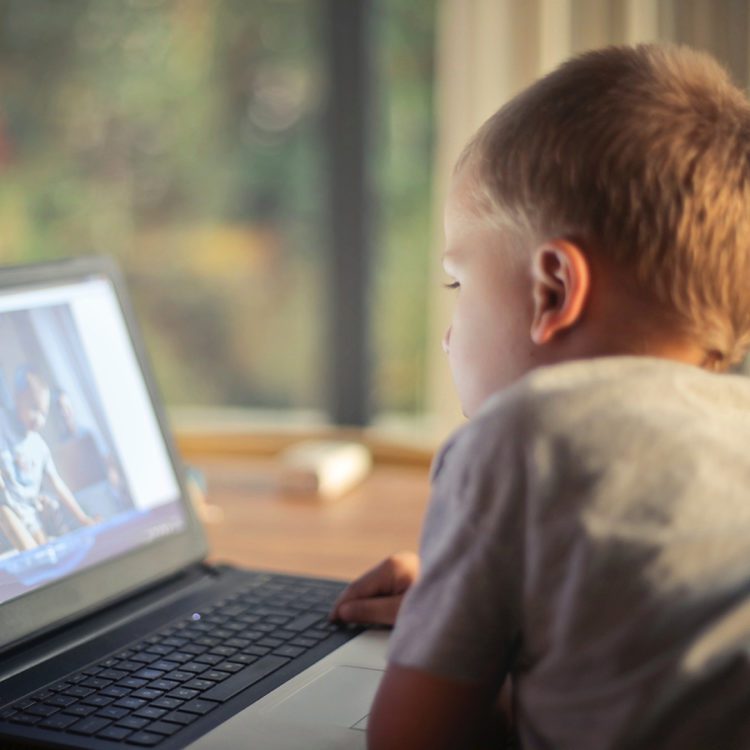OVERVIEW
 Screens—be they television or computers—can transport us to places we have only imagined. They can present narratives that enrich our understanding of the world. At the same time, they can eat up precious time and draw our attention away from important human-to-human contact.
Screens—be they television or computers—can transport us to places we have only imagined. They can present narratives that enrich our understanding of the world. At the same time, they can eat up precious time and draw our attention away from important human-to-human contact.
In an ABC 20/20 special (2019), Diane Sawyer reported on the daily impact of our screen usage. Using the Still Face Paradigm, we demonstrate the social and emotional responses of infants to parents who are unresponsive due to their engagement with their own mobile devices. Past research using this task has indicated that children feel more negative emotions and have difficulties reengaging with unresponsive parents. This study highlights the result of complete immersion in the technological world: our human interactions suffer.
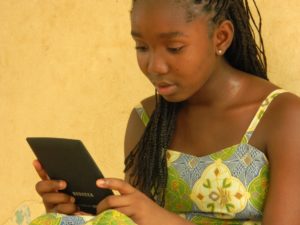 Children are in the midst of a natural experiment surrounded by screens, media, and technology that are shaping not only their experiences but also their learning environments. Little is currently understood about how this pervasive technology can alter, enhance, or interrupt natural parent and child interactions. Our current research attempts to contextualize when and how media can aid learning and we’re continuing our research based on newer technology, such as Metaverse.
Children are in the midst of a natural experiment surrounded by screens, media, and technology that are shaping not only their experiences but also their learning environments. Little is currently understood about how this pervasive technology can alter, enhance, or interrupt natural parent and child interactions. Our current research attempts to contextualize when and how media can aid learning and we’re continuing our research based on newer technology, such as Metaverse.
The Metaverse!
The metaverse is upon us. Soon it will be as omnipresent as TikTok, Instagram, and Facebook (now Meta). As technology advances to bring us new immersive and imaginary worlds, how we educate children and prepare teachers must also advance to meet these new opportunities. When education lags the digital leaps, the technology rather than educators defines what counts as educational opportunity. This is largely what happened with the introduction of “educational” apps designed to be used on smartphones and tablets meant for adults. Today, as the metaverse infrastructure is still under construction, researchers, educators, policymakers, and digital designers have a chance to lead the way rather than get caught in the undertow. To leverage the potential of the metaverse as a 3D, global, interconnected, immersive, and real-time online space, we need new ways to connect the physical world with augmented and virtual reality (VR) experiences.
For more information, check out Kathy’s Brookings Report on the Metaverse, as well as various pieces in in the Institute for the Future of Education and Diverse Issues in Education. You can also listen to Kathy talk about the Metaverse on the Edsurge Podcast.
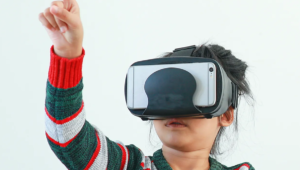
LANGUAGE & SCREENS
 Learning occurs during moments of back and forth between a parent and child, but how are these interactions altered or interrupted in the presence of technology? In one of our recent studies, we explore whether children can learn verbs through screen media (Roseberry et al., 2014). Children were taught new words in one of three ways: face to face interaction, video chat with a real person (Skype), and watching a video. We found that children learned language from both live and Skype interactions! This suggests that screen media can be beneficial to learning when the social interaction is preserved.
Learning occurs during moments of back and forth between a parent and child, but how are these interactions altered or interrupted in the presence of technology? In one of our recent studies, we explore whether children can learn verbs through screen media (Roseberry et al., 2014). Children were taught new words in one of three ways: face to face interaction, video chat with a real person (Skype), and watching a video. We found that children learned language from both live and Skype interactions! This suggests that screen media can be beneficial to learning when the social interaction is preserved.
 In another study, we ask what happens when the social interaction is broken by technology during a learning moment (Reed et al., 2017). Parents taught children two new words, one of which was interrupted by a phone call from the experimenter. We found that children did not learn a word when the parent received a phone call during the teaching phase. Somewhat unsurprisingly, parent responsiveness matters for child learning!
In another study, we ask what happens when the social interaction is broken by technology during a learning moment (Reed et al., 2017). Parents taught children two new words, one of which was interrupted by a phone call from the experimenter. We found that children did not learn a word when the parent received a phone call during the teaching phase. Somewhat unsurprisingly, parent responsiveness matters for child learning!
In a more recent review, we examined the current state of the research regarding the relation between children (from infancy to age 8 years) and screens.ding the relation between children (from infancy to age 8 years) and screens (Hassinger-Das et al., 2020). Using principles from the Science of Learning as a guide, we invited content creators and researchers to create a new wave of the digital revolution, one in which we need to prompt rather than substitute for social interaction.
FEATURED ARTICLES
Playing for the Future: Spatial Thinking Belongs in Preschools and Home Environments
Spatial skills are fundamental for mentally manipulating objects, visualizing and remembering the locations of objects and their paths, reconstructing patterns, and recognizing locations from a variety of perspectives. Despite their link to children’s performance in mathematics and to later success in STEM (science, technology, engineering, and mathematics) careers, spatial skills are notably absent from most educational curricula. This chapter addresses key questions in the field of spatial development: What do we mean when we talk about spatial skills? How do they develop during early childhood? And why is it important to promote them early in life? This chapter reviews the available evidence for these general questions and discusses the efficacy of playful interventions and educational technology to incorporate spatial learning into homes, preschool classrooms, and community settings.
Read Full Article
How educational are “educational” apps for young children? App store content analysis using the Four Pillars of Learning framework
Experts have expressed concerns about the lack of evidence demonstrating that children’s “educational” applications (apps) have educational value. This study aimed to operationalize Hirsh-Pasek, Zosh, and colleagues’ Four Pillars of Learning into a reliable coding scheme (Pillar 1: Active Learning, Pillar 2: Engagement in the Learning Process, Pillar 3: Meaningful Learning, Pillar 4: Social Interaction), describe the educational quality of commercially available apps, and examine differences in educational quality between free and paid apps. We analyzed 100 children’s educational apps with the highest downloads from Google Play and Apple app stores, as well as 24 apps most frequently played by preschool-age children in a longitudinal cohort study.Free apps had significantly lower Pillar 2 (Engagement in Learning Process) scores (t-test, p < .0001) and overall scores (t-test, p < .0047) when compared to paid apps, due to the presence of distracting enhancements. These results highlight the need for improved design of educational apps guided by developmental developmental science.
Children and screens
Since the advent of television in the 1950s, parents, educators, researchers, and policy makers have been concerned about the effects of screen time on children’s development. Then, when computers became widely used, a new wave of interest in the positive and negative effects of this new medium was generated. Within the past 15 years, the development of the smartphone and tablet have completely changed the landscape of screen time. This review examines the current state of the research regarding the relation between children (from infancy to age 8 years) and screens. Using principles from the Science of Learning as a guide, we invite content creators and researchers to create a new wave of the digital revolution, one in which we need to prompt rather than substitute for social interaction.
Read Full Article
Enhancing spatial skills of preschoolers from under-resourced backgrounds: A comparison of digital app vs. concrete materials
Spatial skills support STEM learning and achievement. However, children from low- socioeconomic (SES) backgrounds typically lag behind their middle- and high-SES peers. We asked whether a digital educational app—designed to mirror an already suc-cessful, spatial assembly training program using concrete materials—would be as effective for facilitating spatial skills in under-resourced preschoolers as the concrete mate- rials. Three-year-olds (N = 61) from under-resourced backgrounds were randomly assigned to a business-as-usual control group or to receive 5 weeks of spatial training using either concrete, tangible materials or a digital app on a tablet. The spatial puzzles used were an extension of items from the Test of Spatial Assembly (TOSA). Preschoolers were pretested and posttested on new two-dimensional (2D) TOSA trials. Results indicate that both concrete and digital spatial training increased performance on the 2D-TOSA compared to the control group. The two trainings did not statistically differ from one another suggesting that educational spatial apps may be one route to providing early foundational skills to children from under-resourced backgrounds.
Read Full Article
E-BOOKS
Shared book reading is a common and crucial activity for young children. Early experiences with books expose children to a variety of different words and can predict later reading success. With children’s increasing access to tablets, e-readers, and electronic console (EC) books it is important to see if the benefits of reading are preserved with a media-based platform.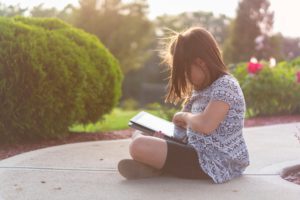
In one study, children at two local children’s museums (Please Touch and Chicago Children’s Museum) were asked to choose one of the displayed books to read with a parent (Parish-Morris et al., 2013). Traditional books foster more questions about the content of the book and more engagement with children. In contrast, e-books tend to stimulate more directives from parents (e.g., Do this.; Push the button.). In a second study, we asked whether children’s book comprehension changed given the e-book context (Dore et al., 2017). Children either heard an audio narration of an e-book, read an e-book with a parent, or read the e-book alone without any audio. Results suggest that children understand the book best after reading with a parent. However, if parents are otherwise occupied, children can also comprehend some information from the audio narration.
DIGITAL TOYS
 As the traditional toys of the past are quickly being replaced with electronically “enhanced” toys, it is important to understand how these changes impact parent–child interactions, especially in light of the evidence that the richness and variety of these interactions have long-term effects on diverse areas of cognition (Hart & Risley, 1995). In a recent study using a traditional and electronic version of a shape sorter, we found that traditional toys prompted more parental spatial language and more overall varied language than did electronic toys (Zosh et al., 2015). These results suggest that electronically enhanced toys hinder parents’ quality language use with children, which may be harmful to their early language learning.
As the traditional toys of the past are quickly being replaced with electronically “enhanced” toys, it is important to understand how these changes impact parent–child interactions, especially in light of the evidence that the richness and variety of these interactions have long-term effects on diverse areas of cognition (Hart & Risley, 1995). In a recent study using a traditional and electronic version of a shape sorter, we found that traditional toys prompted more parental spatial language and more overall varied language than did electronic toys (Zosh et al., 2015). These results suggest that electronically enhanced toys hinder parents’ quality language use with children, which may be harmful to their early language learning.
EDUCATIONAL APPS
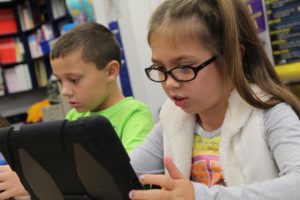 Over 120,000 digital apps are classified as educational and learning based, but with children’s lives saturated by digital technologies, it is important to assess if this is true. Unfortunately, the resources are not present to evaluate each app as it enters the market, thus, the apps that are classified as educational are unregulated and untested. Using the Science of Learning we propose that apps designed to promote active, engaged, meaningful, and socially interactive learning, known as the four “pillars” of learning, within the context of a supported learning goal, are considered educational. Our lab completed a review of how these four pillars of playful learning could be applied in the area of educational apps (Hirsh-Pasek et al., 2015) and we are diligently working to better understand how playful learning mechanisms can support educational apps. In a recent study (Bower et al., 2020), we explored whether a digital educational app—designed to mirror an already successful, spatial assembly training program using concrete materials—would be as effective for facilitating spatial skills in under-resourced preschoolers as the concrete materials. In another study (Meyer et al., 2021) on 100 “educational apps” that are favored by children, we found that few support active young minds in meaningful, socially interactive ways.
Over 120,000 digital apps are classified as educational and learning based, but with children’s lives saturated by digital technologies, it is important to assess if this is true. Unfortunately, the resources are not present to evaluate each app as it enters the market, thus, the apps that are classified as educational are unregulated and untested. Using the Science of Learning we propose that apps designed to promote active, engaged, meaningful, and socially interactive learning, known as the four “pillars” of learning, within the context of a supported learning goal, are considered educational. Our lab completed a review of how these four pillars of playful learning could be applied in the area of educational apps (Hirsh-Pasek et al., 2015) and we are diligently working to better understand how playful learning mechanisms can support educational apps. In a recent study (Bower et al., 2020), we explored whether a digital educational app—designed to mirror an already successful, spatial assembly training program using concrete materials—would be as effective for facilitating spatial skills in under-resourced preschoolers as the concrete materials. In another study (Meyer et al., 2021) on 100 “educational apps” that are favored by children, we found that few support active young minds in meaningful, socially interactive ways.
SELECTED ARTICLES
Hirsh-Pasek, K., Zosh, J., Hadani, H., Golinkoff, R. M., Clark, K., Donohue, C. & Wartella, E. (2022, February). A Whole new world: Where education meeting the metaverse (White Paper). Brookings Institution White Paper.
Gaudreau, C., Hirsh-Pasek, K., & Golinkoff, R. M. (2022). What’s in a distraction? The effect of parental cell phone use on parents’ and children’s question-asking. Developmental Psychology, 58(1), 55- 68. https://doi.org/10.1037/dev0001268
Avelar, D., Dore, R., Schwichtenberg, A. J., Roben, C. K. P., Hirsh-Pasek, K., & Golinkoff, R. M. (2022). Children and Parents’ Physiological Arousal and Emotions during Shared and Independent E-book Reading: A Preliminary Study. International Journal of Child-Computer Interaction. 33, XX-XX. https://doi.org/10.1016/j.ijcci.2022.100507
Bower, C., Zimmermann, L., Verdine, B., Pritulsky, C., Golinkoff, R. M., & Hirsh-Pasek, K. (2021). Enhancing spatial skills of preschoolers from under-resourced backgrounds: A comparison of digital app vs. concrete materials. Developmental Science, 25, e13148 https://doi.org/10.1111/desc.13148
Meyer, M., Zosh, J. M., McLaren, C., Robb, M., McCafferty, H., Golinkoff, R., Hirsh-Pasek, K., & Radesky, J. (2021). How educational are educational apps for young children App store content analysis using the Four Pillars of Learning framework. Journal of Children and Media.
Hassinger-Das, B., Brennan, S., Dore, R. A., Golinkoff, R. M., & Hirsh-Pasek, K. (2020). Children and screens. Annual Review of Developmental Psychology, 2. doi.org/10.1146/annurev-devpsych-060320-095612
Gaudreau, C., King, Y. A., Dore, R. A., Puttre, H., Nichols, D., Hirsh-Pasek, K., & Golinkoff, R. (2020). Preschoolers benefit equally from video chat, pseudo-contingent video, and live book reading: Implications for storytime during the coronavirus pandemic and beyond. Frontiers in Psychology, 11, 1-17. DOI: 10.3389/fpsyg.2020.02158
Dore, R., Shrilla, M., Hopkins, E., Collins, M., Scott, M., Schatz, J., Lawson-Adams, J., Valladares, T., Foster, L., Puttre, H., Spiewal, T., Hadley, E., Golinkoff, R. M., Dickinson, D., & Hirsh-Pasek. K. (2019). Education in the app store: using a mobile game to support U.S. preschoolers’ vocabulary learning. Journal of Children and Media, 13(4), 452-471.
Dore, R. A., Zosh, J. M., Hirsh-Pasek, K., Golinkoff, R. M. (2018). Plugging into word learning: The role of electronic toys and digital media in language development. In F. Blumberg & P. Brooks (Eds.), Cognitive Development in Digital Contexts. Elsevier.
Hirsh-Pasek, K., Zosh, J., Golinkoff, R. M., Gray, J., Robb, M., & Kaufman, J. (2015). Putting education in educational apps: Lesson for the science of learning. Psychological Science in the Public Interest, 16(1), 3-34.
Zosh, J., Filipowicz, A., Verdine, B., Golinkoff, R. M., & Hirsh-Pasek, K. (2015). Parental language with electronic and traditional and shape sorters. Mind, Brain & Education, 9(3),136-144.


